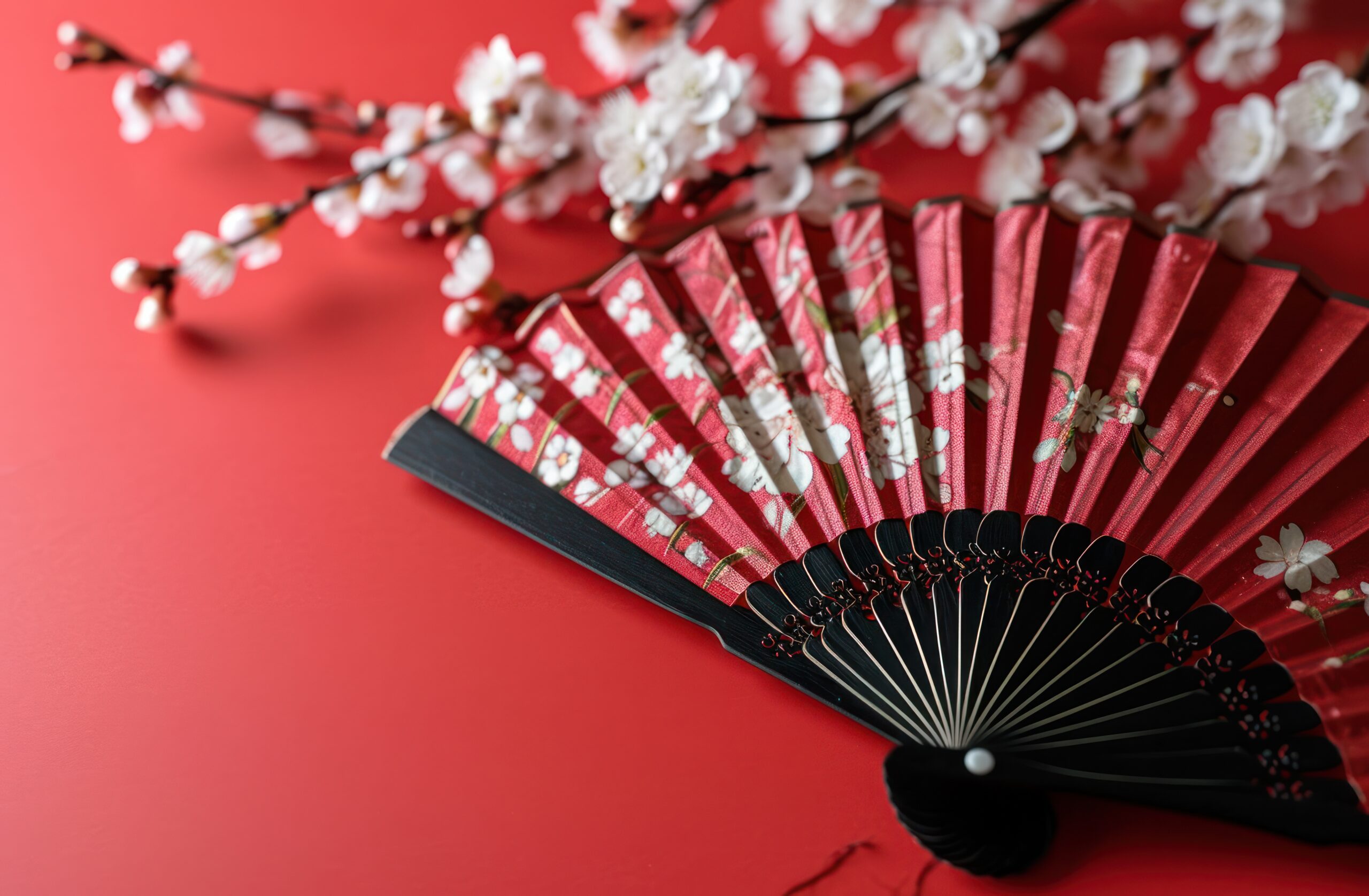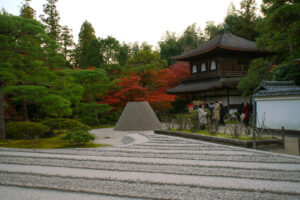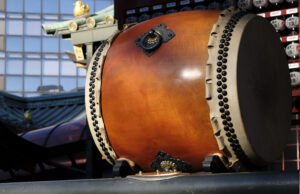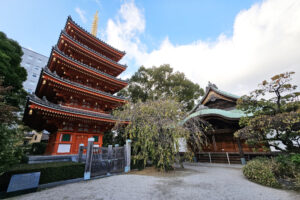In the heart of Japan’s rich culture, lies an art form that combines functionality with aesthetic beauty – the traditional Japanese fan. These fans, known as ‘sensu’ and ‘uchiwa’ in Japanese, have transcended their original purpose of generating a breeze to become symbols of grace, social status, and fashion. As we delve into the intricate world of Japanese fan crafts, we embark on a journey through time, exploring the elegance, tradition, and skill that shape this exquisite art form. From the materials and techniques used in their creation to their presence in festivals and modern fashion, Japanese fans tell a story of cultural continuity and innovation, weaving a narrative that captures the essence of Japan’s artistic heritage.
Unfolding Beauty: The World of Japanese Fans
Japanese fans are not merely tools for cooling oneself; they are masterpieces of artistic expression. Each fan embodies a blend of function and beauty, serving as a canvas for intricate designs and a medium for cultural storytelling. The aesthetic appeal of these fans, characterized by their delicate structure and vibrant patterns, has captivated people’s hearts both in Japan and around the world. The art of fan making, while preserving traditional motifs, has evolved, embracing contemporary designs without losing its soul. These fans reflect the seasonal changes and nature’s beauty, invoking a sense of harmony and tranquility in those who hold them.
Crafting Elegance: The History of Japanese Fans
The history of Japanese fans dates back to the 6th century, initially influenced by Chinese fan culture. Over the centuries, the art of fan making in Japan has developed its own identity, with unique styles and manufacturing techniques. Fans were once symbols of social status and were used in religious and royal ceremonies. The fan’s evolution is closely tied to Japan’s cultural and artistic developments, transitioning from a luxury item for the aristocracy to a popular accessory among the common folk. Historical records and artworks depict fans in various contexts, illustrating their significance in Japanese society throughout the ages.
A Breeze of Tradition: The Types of Japanese Fans
Japanese fans come in various shapes and sizes, each type serving different purposes. The two main types are the folding fan (‘sensu’) and the non-folding flat fan (‘uchiwa’). Sensu, with their collapsible bamboo ribs covered in paper or silk, are portable and often used in dance performances and ceremonies. Uchiwa, made from a single bamboo frame with a fixed paper surface, serve as cooling devices during the hot summer months. Beyond these, there are specialized fans for tea ceremonies, martial arts, and even those used in traditional storytelling, showcasing the fan’s versatility and integral role in Japanese culture.
Mastering the Craft: Techniques in Fan Making
The art of making Japanese fans is a testament to the skill and patience of the artisans. The process involves precise craftsmanship, from selecting the right bamboo for the frame to applying the paper or silk covering. Artisans must ensure the fan opens and closes smoothly, a task that requires meticulous attention to detail. The paper or silk is often hand-painted or printed with traditional Japanese designs, a process that demands artistic finesse. The creation of a single fan can involve multiple artisans, each specializing in different aspects of its production, from the bamboo work to the final decorative touches.
Bamboo and Paper: The Core of Japanese Fans
The materials used in Japanese fans are as important as the craftsmanship. Bamboo, known for its strength and flexibility, is the primary material for the fan’s frame. The selection of bamboo is crucial, as it needs to be both sturdy and lightweight. The paper or silk that forms the fan’s surface is equally significant, with artisans often choosing materials that provide durability while allowing for intricate designs. These natural materials not only contribute to the fan’s aesthetic and functional qualities but also underscore its connection to traditional Japanese values of harmony with nature.
Designs of the Wind: Patterns That Tell Stories
The designs on Japanese fans are not mere decorations; they are narratives woven into the fabric of the fan. From cherry blossoms and autumn leaves to scenes from Japanese mythology and literature, the motifs reflect Japan’s rich cultural heritage and seasonal changes. These designs are imbued with symbolism, conveying messages of good fortune, love, and perseverance. The artistry involved in fan designs encapsulates the essence of Japanese aesthetics, highlighting the importance of beauty and meaning in everyday objects.
The Artisans Behind the Fan: Skill and Dedication
Behind every Japanese fan is an artisan whose skill and dedication breathe life into this traditional craft. These craftsmen inherit techniques passed down through generations, preserving the legacy of fan making while adapting to contemporary tastes. The journey to becoming a master fan maker is long and demanding, requiring years of training and a deep understanding of the materials and cultural significance of the fan. Despite the challenges, these artisans remain committed to their craft, driven by a passion for creating beauty that can be held in the hands of people around the world.
From Function to Fashion: The Evolution of Fans
Over time, the Japanese fan has transitioned from a cooling device to a fashion statement and cultural symbol. In contemporary Japan, fans are not only used for practical purposes but also as accessories in traditional attire, such as kimonos. The modern fan incorporates new materials and designs, reflecting current trends while maintaining its historical and cultural roots. This evolution demonstrates the fan’s adaptability and enduring relevance in Japanese society, bridging the gap between tradition and modernity.
Fans in Festivals: A Colorful Tradition Revived
Japanese fans play a significant role in festivals and celebrations, adding to the vibrant tapestry of Japanese culture. During summer festivals, such as the Bon Odori, fans are used in traditional dances and as decorative items, embodying the festive spirit. The use of fans in these settings showcases their enduring presence in Japanese cultural practices, serving both functional and symbolic purposes. These festivals provide an opportunity for the art of fan making to be appreciated by a wider audience, highlighting the craft’s vitality and cultural significance.
Preserving the Craft: Challenges and Solutions
While the art of Japanese fan making is celebrated, it faces challenges in the modern era. The rise of mass-produced fans and changing lifestyle habits have impacted traditional artisans. However, efforts to preserve this craft are underway, including apprenticeship programs, workshops, and exhibitions that aim to educate the public about the value and beauty of handmade fans. Artisans are also exploring innovative designs and marketing strategies to appeal to younger generations and global audiences, ensuring the survival and relevance of this ancient art form.
Fans in the Modern World: A Blend of Old and New
In today’s globalized world, Japanese fans continue to enchant with their timeless beauty and functionality. They have found a place in contemporary fashion, interior design, and even in the performing arts, demonstrating their adaptability and appeal. The fusion of traditional craftsmanship with modern aesthetics has opened new avenues for the art of fan making, captivating a diverse audience. As Japanese fans bridge cultures and generations, they serve as a testament to the enduring charm and cultural significance of this traditional craft.
Collecting the Breeze: The Global Fascination with Japanese Fans
The fascination with Japanese fans extends far beyond the borders of Japan, attracting collectors and enthusiasts from around the globe. These fans are cherished not only for their beauty and craftsmanship but also for their cultural and historical value. International exhibitions and cultural exchanges have played a significant role in spreading awareness of the art of Japanese fan making, fostering a global appreciation for this exquisite craft. As collectors seek out both antique and contemporary fans, the demand for these artistic creations supports the continuation of the craft, ensuring its legacy for future generations.
The art of Japanese fan crafts is a captivating blend of tradition, beauty, and innovation. As we’ve explored the intricate world of these fans, it’s clear that they are more than just decorative items or cooling tools; they are a vibrant expression of Japanese culture and aesthetics. Through the dedication of artisans, the richness of history, and the embrace of modernity, the tradition of fan making continues to thrive, connecting people across the world with its timeless elegance. As fans unfold in the hands of those who appreciate them, they reveal the enduring allure of Japanese craftsmanship, inviting us to explore the depths of cultural heritage and the gentle breeze of artistic inspiration.








